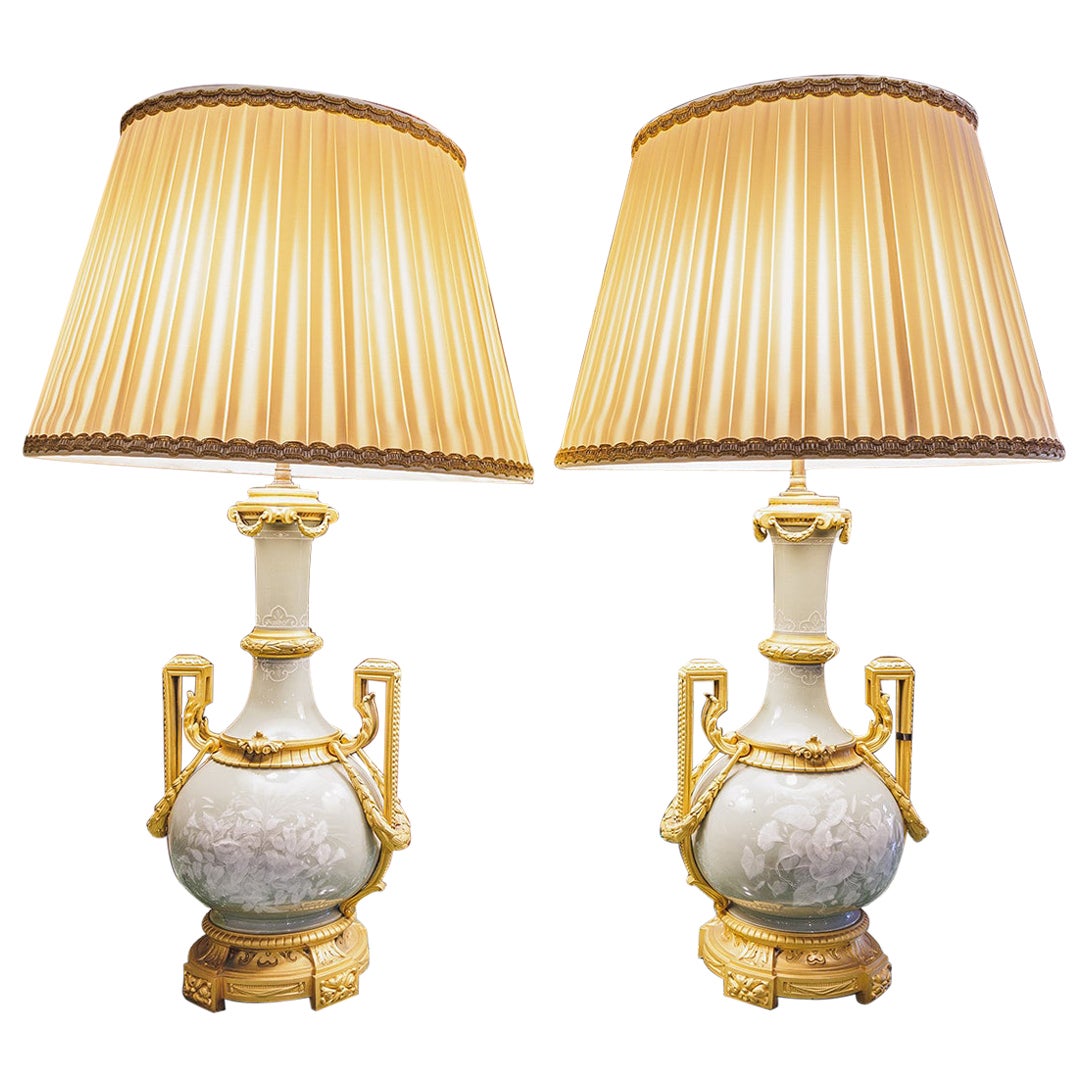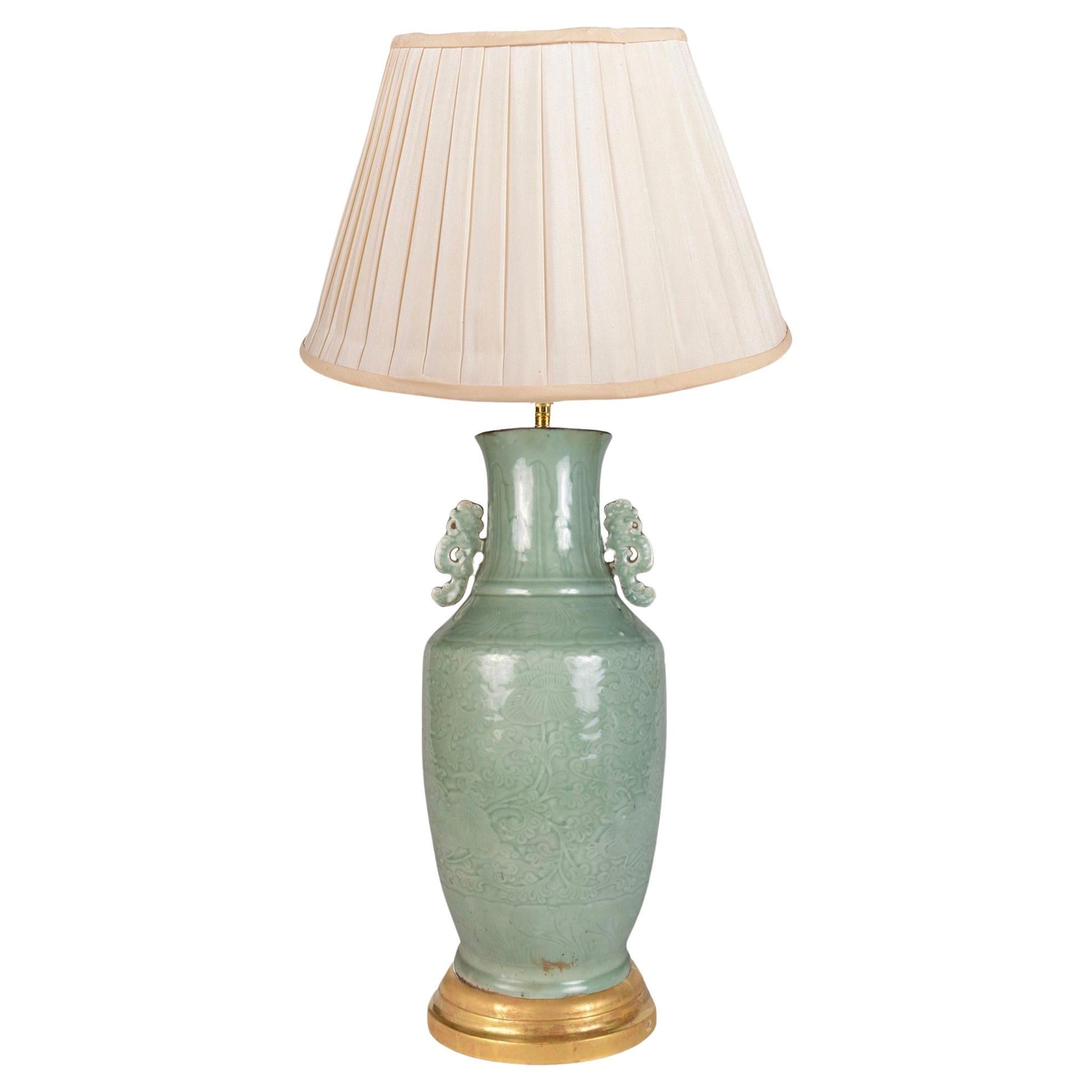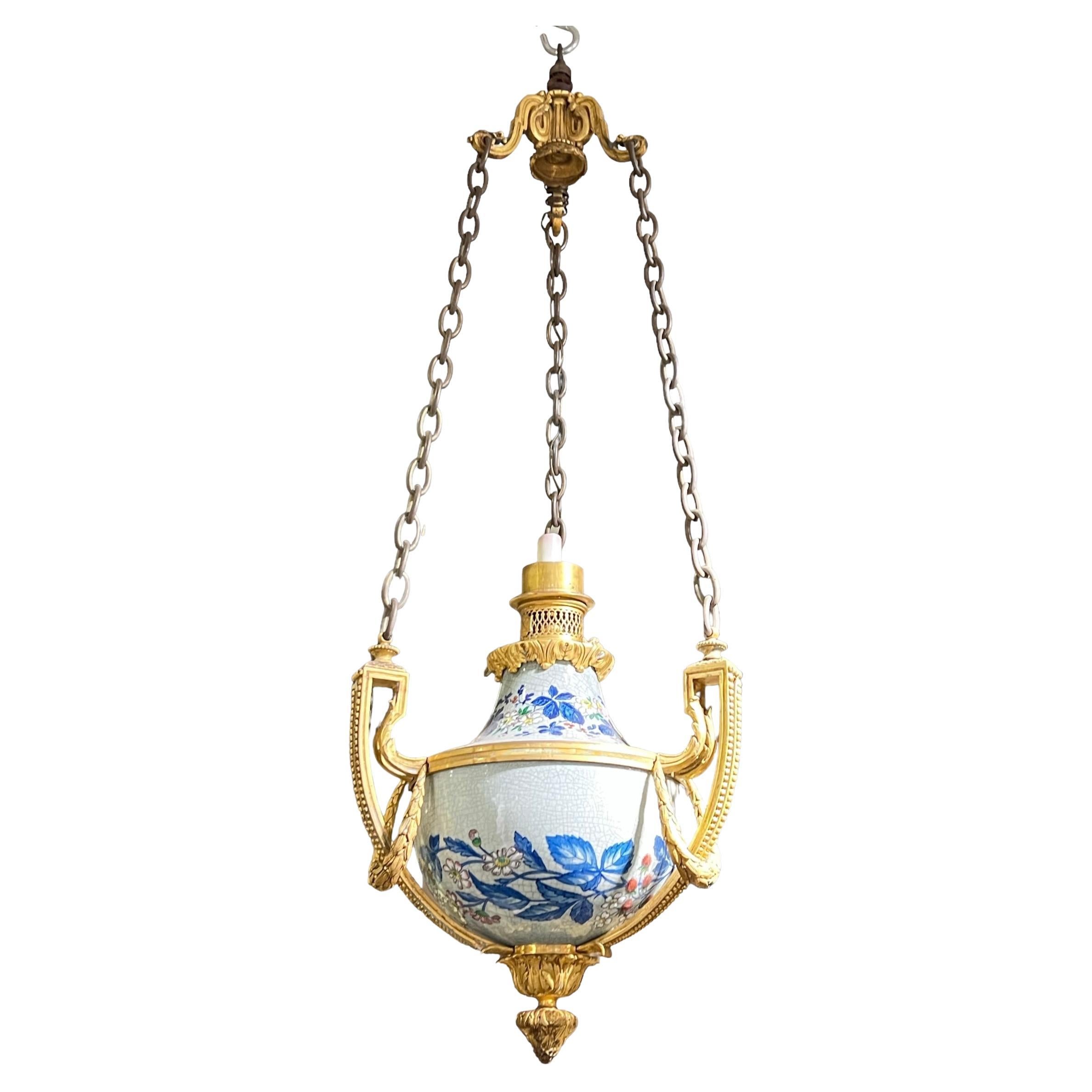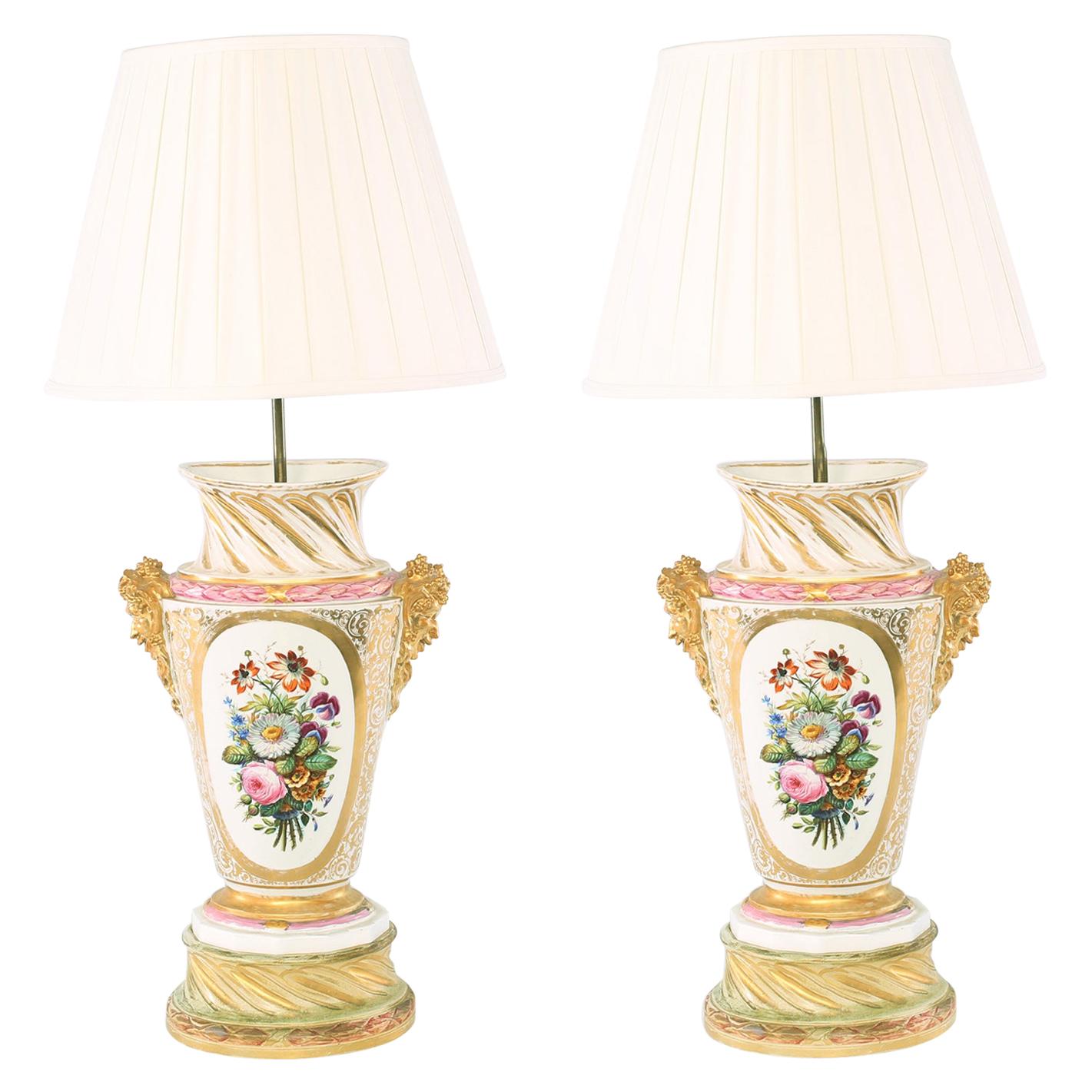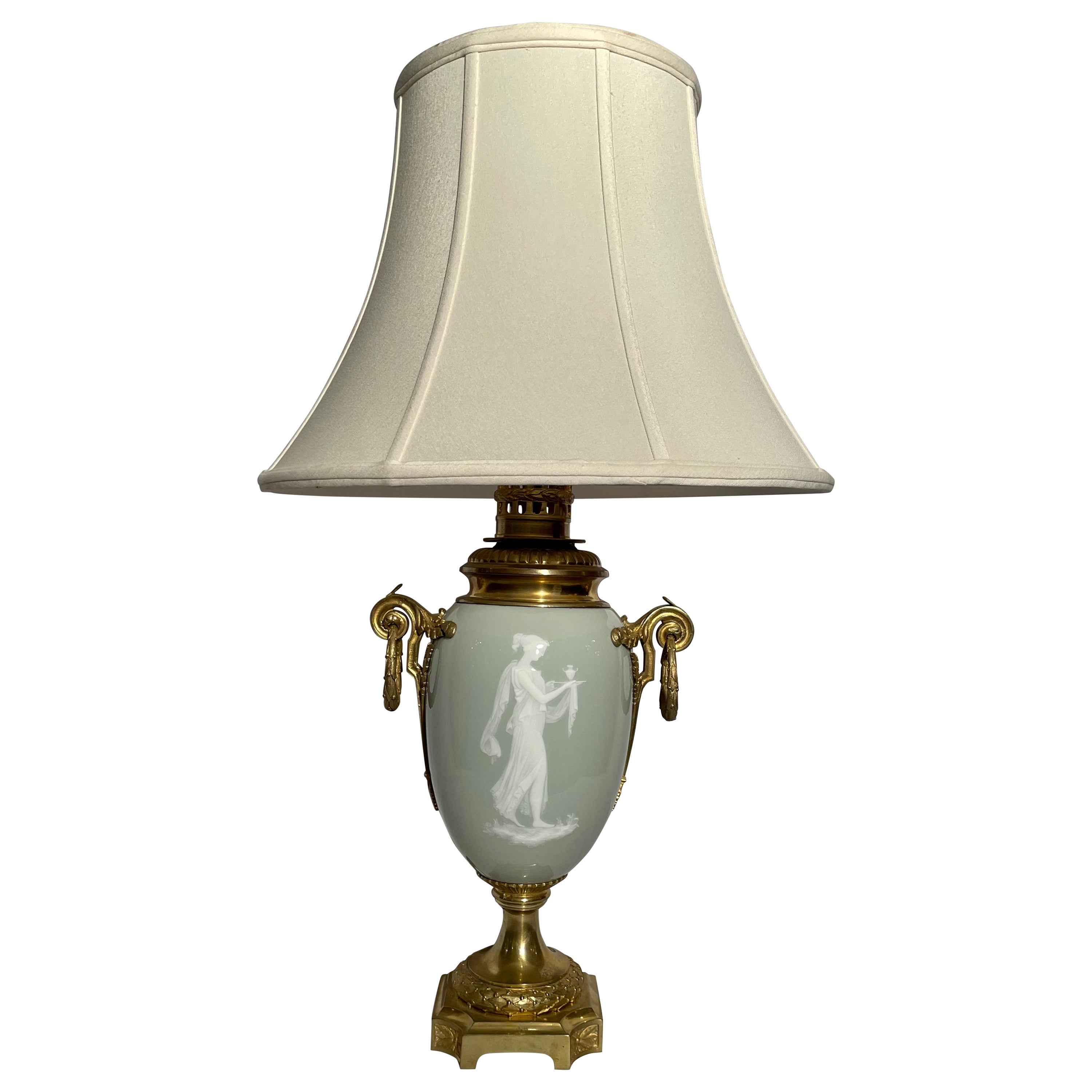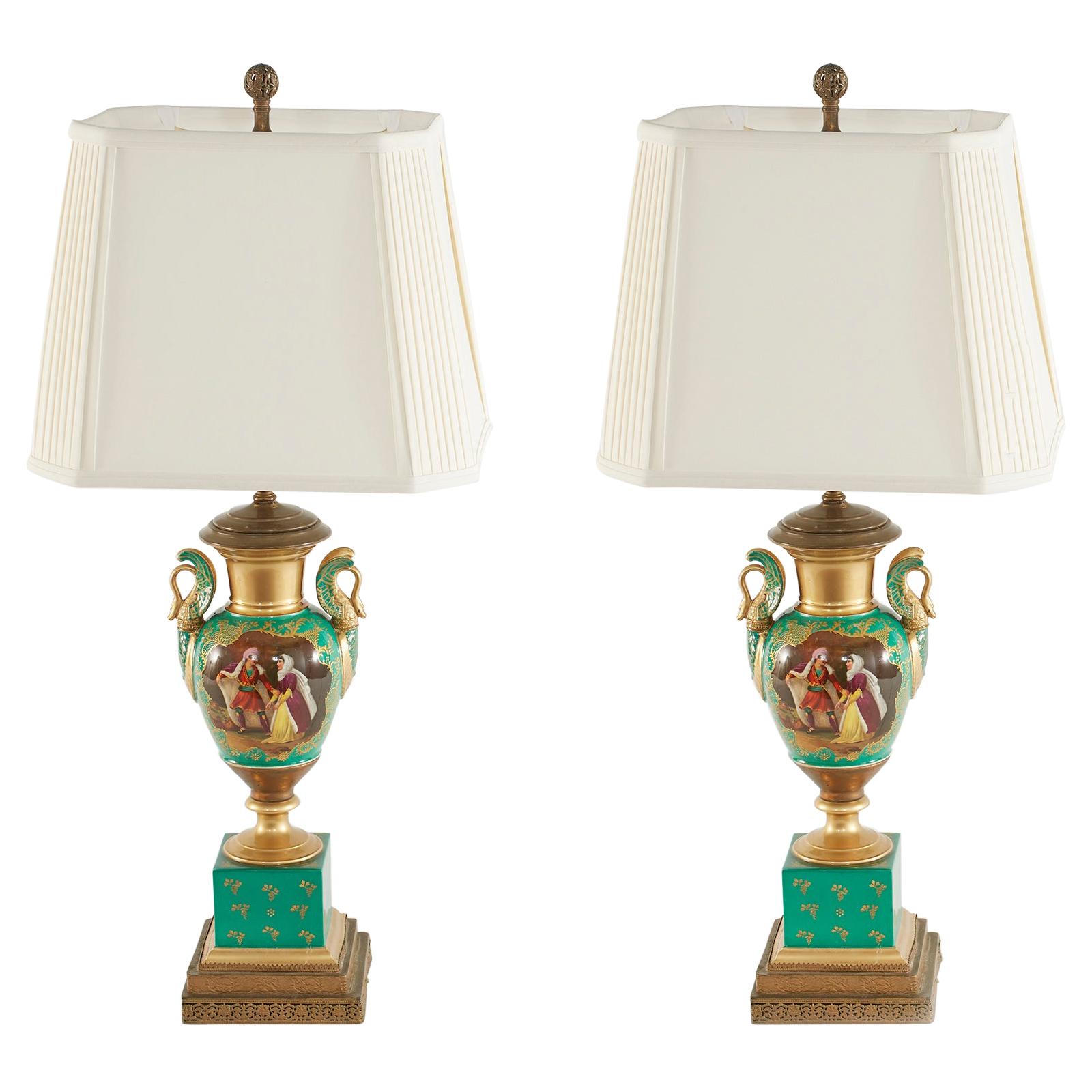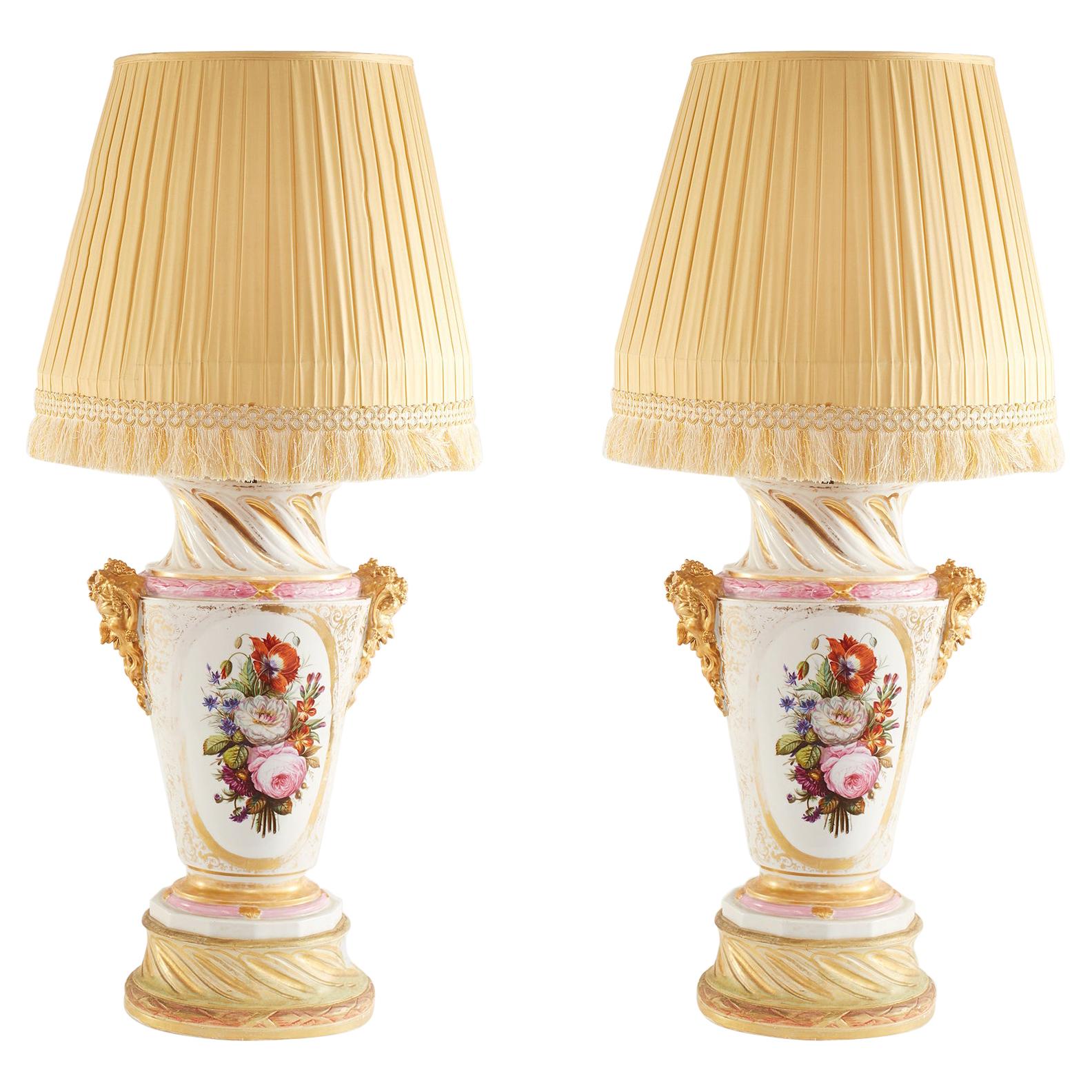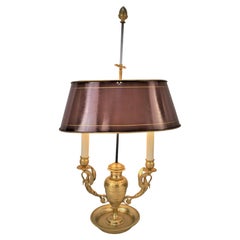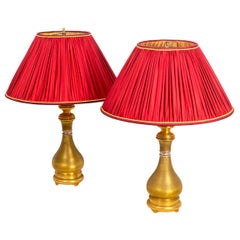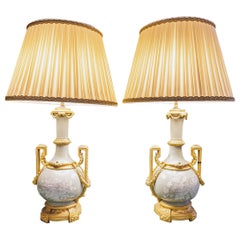
19th Century Gilt Bronze Celadon Porcelain Table Lamp by Gagneau
View Similar Items
Want more images or videos?
Request additional images or videos from the seller
1 of 10
19th Century Gilt Bronze Celadon Porcelain Table Lamp by Gagneau
About the Item
- Creator:Gagneau Paris (Manufacturer)
- Dimensions:Height: 30 in (76.2 cm)Diameter: 15 in (38.1 cm)
- Materials and Techniques:
- Place of Origin:
- Period:
- Date of Manufacture:19th Century
- Condition:New wiring and new silk lampshade.
- Seller Location:Fairfax, VA
- Reference Number:1stDibs: LU91365942693
About the Seller
5.0
Vetted Seller
These experienced sellers undergo a comprehensive evaluation by our team of in-house experts.
Established in 1978
1stDibs seller since 2011
852 sales on 1stDibs
Typical response time: 3 hours
More From This SellerView All
- French 19th Century Gilt bronze Table/Desk LampLocated in Fairfax, VAFantastic gilt and oxidized 19th century bronze candelabra that has been electrified with double pull chain sockets. Measurement includes the lampshade.Category
Antique 19th Century French Empire Table Lamps
MaterialsBronze
- 19th Century Gilt Bronze Empire Bouillotte LampLocated in Fairfax, VAGilt bronze double swan arms bouillotte desk/table lamp with ovel red shade.Category
Antique 19th Century French Empire Table Lamps
MaterialsBronze, Iron
- Pair of 19th Century Gilt Bronze and Marble Urn Table LampsLocated in Fairfax, VAAir of 19th century marble urns with gilt rams' head bronze on each side that professionally have been electrified as table lamps and fitted with pleated silk lampshades.Category
Antique 19th Century French Table Lamps
MaterialsMarble, Bronze
- 19th Century Electrified Bronze Onyx Table LampLocated in Fairfax, VAOnyx and bronze from 19th century oil lamp that has been electrified with 2 pull chain sockets and fitted with black lampshade. Professionally rewired.Category
Antique 19th Century French Table Lamps
MaterialsOnyx, Bronze
On Hold$1,250 - 19th Century Empire Style Bronze Table LampLocated in Fairfax, VAFrench Empire style Electrified bronze and brown lacquer on bronze oil lamp with three-way socket and fitted with silk lampshade.Category
Antique 19th Century Empire Table Lamps
MaterialsBronze
- French 19th Century Gilt and Oxidized Bronze Candlestick LampLocated in Fairfax, VA19th century gilt bronze, young girl holding flower candle holder that has been professionally rewired and fitted with small silk lampshade.Category
Antique 19th Century French Table Lamps
MaterialsBronze
You May Also Like
- Maison Gagneau, Pair of Lamp in Guilloche Gilt Brass, Late 19th CenturyBy Gagneau ParisLocated in Saint-Ouen, FRMaison Gagneau, signed. Pair of baluster shape lamps in guilloche gilt brass. They stand on a circular base. The collar is circled with a silvered ring...Category
Antique 1880s European Table Lamps
MaterialsBrass
- A fine pair of 19th century French celadon porcelain and gilt bronze lampsLocated in Dallas, TXA very fine pair of 19th century French celadon porcelain and gilt bronze mounted lamps . Finest quality . Large sizeCategory
Antique Late 19th Century French Louis XVI Table Lamps
MaterialsBronze
- 19th Century Celadon Porcelain Lamp with Gilded Bronze MountingLocated in NICE, FRThis large celadon porcelain lamp, measuring 50 cm in height and 22 cm in diameter, showcases intricate floral and vegetal motifs, a creation from the esteemed French workshop Gaguen...Category
Antique Late 19th Century French Napoleon III Table Lamps
MaterialsBronze
- Pair of Porcelain Vases Ormolu-Mounted in Lamps by Gagneau Paris XIXth CenturyBy Gagneau ParisLocated in Saint-Ouen, FRPair of large Japanese Porcelain Cone Shape Vases with Imari decoration Important mounts in ormolu and gilded metal, the base decorated with a laurel wreath, the upper part of falling leaves and a frieze of knotted ribbon. The mounts signed Gagneau, 115 R. Lafayette. Circa 1860 With their original aluminium bulb cover and original gilding Vase it self Height 47 cm The Gagneau Company is one of the most famous lighting factories in Paris in the nine-teenth century, established in 1800 at 25 rue d'Enghien in Paris and later at 115 rue de Lafayette. She has participated in many exhibitions throughout this century. She began in 1819 with the Exposition des Produits de l'Industrie and later participated in the Universal Exhibitions where she was part of the jury in the category of art bronzes (class 25) at the Universal Exhibition in Paris in 1889. "Imari" was simply the trans-shipment port for Arita wares, from where they went to the for-eign trading outposts at Nagasaki. It was the kilns at Arita which formed the heart of the Japanese porcelain industry. Arita's kilns were set up in the 17th century, after kaolin was discovered in 1616. A popular legend attributes the discovery to an immigrant Korean potter, Yi Sam-Pyeong (1579–1655), although most historians consider this doubtful. After the discovery, some kilns began to produce revised Korean-style blue and white porcelains, known as Early Imari, or "Shoki-Imari". In the mid-17th century, there were also many Chinese refugees in northern Kyushu due to the turmoil in China, and it is said that one of them brought the overglaze enamel coloring technique to Arita. Thus Shoki-Imari developed into Ko-Kutani, Imari, and later Kakiemon, which are sometimes taken as a wider group of Imari wares. Ko-Kutani was produced around 1650 for both export and domestic market.Kutani Ware is characterized by vivid green, blue, purple, yellow and red colors in bold designs of landscapes and nature. Blue and white porcelain pieces continued to be produced and they are called Ai-Kutani. Ko-Kutani Imari for the export market usually adopted Chinese design structure such as kraak style, whereas Ai-Kutani for the domestic market were highly unique in design and are ac-cordingly valued very much among collectors. Ko-Kutani style evolved into Kakiemon-style Imari, which was produced for about 50 years around 1700. Kakiemon was characterized by crisp lines, and bright blue, red and green designs of dramatically stylized floral and bird scenes. Imari achieved its technical and aes-thetic peak in the Kakiemon style, and it dominated the European market. Blue and white Kakiemon is called Ai-Kakiemon. The Kakiemon style transformed into Kinrande in the 18th century, using underglaze blue and overglaze red and gold enamels, and later additional colors. Imari began to be exported to Europe when the Chinese kilns at Jingdezhen were damaged in the political chaos and the new Qing dynasty government halted trade in 1656–1684. Ex-ports to Europe were made through the Dutch East India Company, and in Europe the des-ignation "Imari porcelain" connotes Arita wares of mostly Kinrande Imari. Export of Imari to Europe stopped in mid-18th century when China resumed export to Eu-rope, since Imari was not able to compete against Chinese products due to high labor costs. By that time, however, both Imari and Kakiemon styles were already so popular among Eu-ropeans that the Chinese export porcelain copied both, a type known as Chinese Imari. At the same time, European kilns, such as Meissen and English potteries such as Johnson Bros. and (Royal) Crown Derby, also imitated the Imari and Kakiemon styles. Export of Imari surged again in late 19th century (Meiji era) when Japonism flourished in Europe.Thus, in the western world today, two kinds of true Japanese Imari can...Category
Antique 1880s French Japonisme Table Lamps
MaterialsBronze
$8,408 Sale Price / set30% Off - Chinese 19th Century Celadon porcelain vase / lamp.Located in Brighton, SussexA very impressive early 19th Century, Chinese Celadon porcelain vase/lamp. Having wonderful scrolling embossed decoration to the whole and classical handles to either side. We can ha...Category
Antique Early 19th Century Chinese Chinese Export Table Lamps
MaterialsPorcelain
- 19th Century French Bronze and Pottery Hanging Oil Lamp by GagneauBy Gagneau ParisLocated in New York, NYUnique 19th century hanging oil lamp by Gagneau and Company of Paris, with urn form crafted from faience with blue, red and pink flowers and leaves on a cream colored ground, with ne...Category
Antique Late 19th Century French Chandeliers and Pendants
MaterialsBronze
Recently Viewed
View AllMore Ways To Browse
Antique Metal Oil Lamps
Celadon With Bronze
Celadon Green Lamps
Antique Oil Lamps Green
Antique Green Oil Lamp
Green Antique Oil Lamp
Green Silk Lampshades
Celadon Green Table Lamp
Celadon Green Jade
Celadon Glazed Porcelain Lamps
Antique Jade Lamp
Jade Lamp Antique
Green And Blue Glass Lamps
Polished Chrome Lamp Shade
Large Acrylic Table
Vintage Star Lamp
Orange Table Lamps A Pair
Pair Of Tole Lamps

